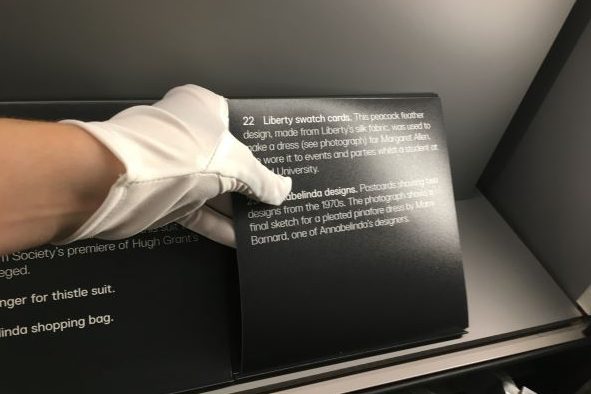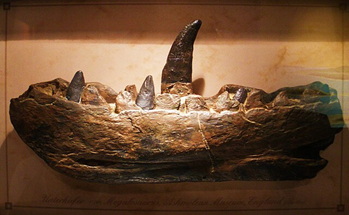Join Lauren, one of our excellent interns, on an average day at MOX
A typical day as an MOX summer intern invariably starts with me trying to look as professional as possible in the Town Hall as I look for my supervisor for the day. Somehow, they are always in the last place I look. Once I find them, we plan out our work for another busy morning. Installing a brand-new museum requires a lot of patience, and figuring out which cases can be safely installed is a process. My internship can involve me finding various other tasks to busy myself with while people more expert than me build cases and install large objects. In fact, I’m drafting this blog post while waiting of the Siege of Oxford painting to be hung on the wall by specialists. But, each day there’s at least one case for me and my teammates to install, so pretty soon it’ll be time to find some gloves.
We almost always wear gloves when handling objects, usually nitrile, which is similar to latex and ensures no dirt or oil from your fingers can transfer to and damage objects. This is especially important for metal objects, as the sweat from our fingers can corrode old metals! If I’m lucky, we will wear cotton gloves, which are less protective, but more comfortable and make me feel like a smooth criminal.
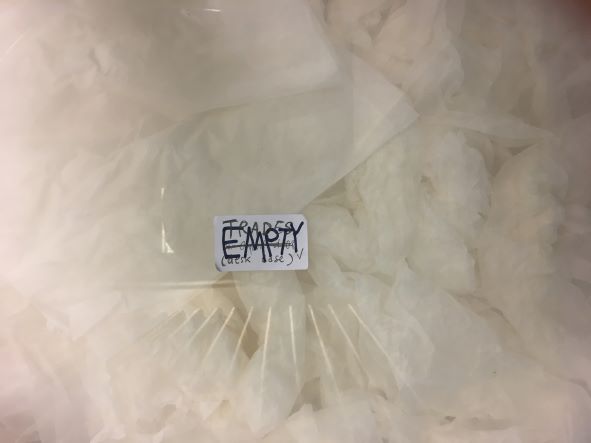
An empty storage box, now being used to store spare tissue paper. It’s waste not want not here at MOX.
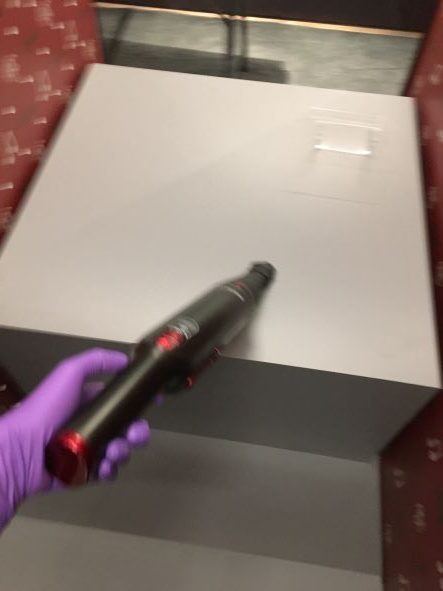
A very blurry picture of hoovering the ‘entertaining Oxford’ case. Since then, I’ve been using a cloth instead as I really don’t like the noise it makes!
Before any objects go in, the inside of the case needs to be cleaned, which is usually my job. The museum does have a tiny hoover, but I often just use a cloth to remove any dust. We definitely don’t want dust in any of our cases, as it can harbor pollutants and pests which damage, or in extreme cases, destroy, certain collections, so as tedious as it can be it’s a very important job. Once the case is clean it is ready for objects.
The first case I installed was the Alice in Wonderland case in Gallery 2, along with my fellow intern Madi. I was so nervous to have been trusted handling and displaying such valuable objects, and terrified I was going to break everything, but luckily it all went smoothly. Now, installing cases is my favourite part of my job. To see the finished product is so rewarding, and it’s a privilege to handle historic objects every day. Installing one case usually takes about an hour, depending on its size and how many people are working together. Between planning, cleaning and installing, by the time one case is finished it might be time for lunch. Open cases and unpacked objects are not a place for snacks, so by then I’m always starving!
After lunch there’s often one more case we can install that day. The first case I worked on by myself is the ‘talking shop’ case, also in Gallery 2. I’m not quite trusted alone with the vertical stands yet; you’ll see if you go to the museum letters and postcards stuck to vertical Perspex mounts, but if you need a small item placed carefully on a flat surface, I’m your guy. Allowing time for me to get confused by case plans and object lists, I can install a small surface like this one in about an hour and a half, and, though I was warned about some particularly fragile press studs, I did not break a single object, which I’m considering a big win.
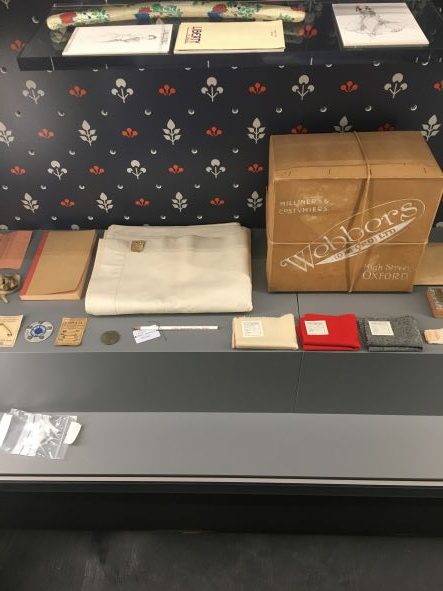
The finished product of the first installation I did on my own! A lot of it has since been moved around, as case plans aren’t always perfect.
When there’s no more installation work we can do, there are other vital prep tasks I can get on with. Most of my tasks involve organising things – case plans, label stands, object storage, you name it. It may sound tedious but it actually makes installing much easier – it means I’m familiar with the space, and being able to help people find what they need quickly is a rewarding part of my job. As the objects weren’t packed according to their new display cases, packing the boxes according to the new museum plans took several days, and an empty box or two at the end of an installation is a sign of a job well done.
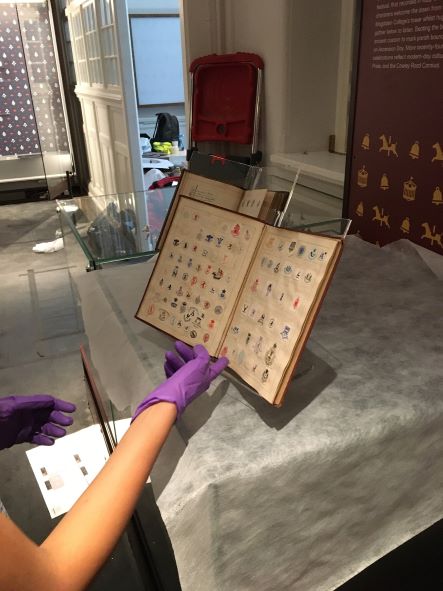
Installing the Alice case – the books went on specially built mounts that we fitted together ourselves.
On days where no installation can happen at all, I work from home, as so many of us have gotten used to during the pandemic. I’ve been working on cleaning up the City Stories website, resizing the images and resisting the urge to write ‘help I’m trapped in an alt text factory’ into the alt text I’m writing (alt text describes images to people whose sight is impaired, it is not an appropriate space for japes). I’ve also been writing some community labels. Community labels are a space for members of the Oxford community to share their personal connections or unique perspectives on the displays. Failing that, they are a space for an intern from Newcastle to share whatever’s in her mind following a quick Google search. It has taught me a lot about local history, which I’ve enjoyed, and was also a fun exercise in interpreting objects from different angles, which, as a history undergrad, is my jam. Still, it would be great to have labels which are a little more personal if you have any bright ideas.
The day ends at 5pm, sometimes earlier if I run out of things to sort. By then I’m pretty tired, and very glad my mum is still at home in Newcastle as I’m covered in building site dust. I get rid of my gloves – or put them in my bag for tomorrow if they’re clean – pick up my backpack from the office, sign out at the front desk and it’s the end of another successful day installing Oxford’s hidden histories.
Written by MOX intern and student at the University of Oxford, Lauren Hanson.
Want to write your own Oxford-inspired post? Sign up as a volunteer blogger.

